

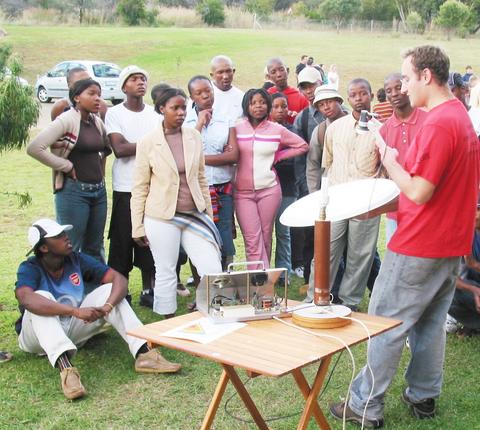
The event start with arrival of 120 members of the public on Saturday afternoon. Here MSc student Ben Klein shows that a satellite dish is really a small radio telescope.
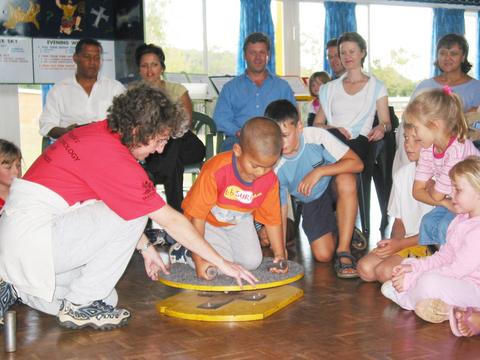
Astronomer Marion West lends a hand so that a little visitor can learn about angular momentum on a turntable.
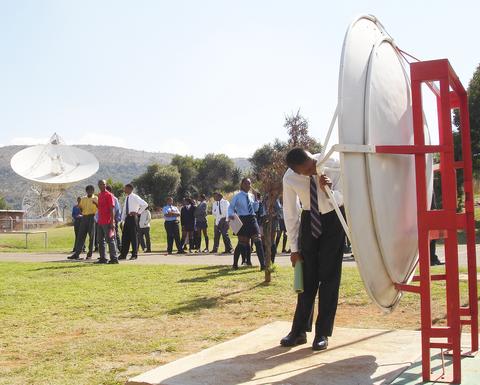
Whisper dishes show the focusing properties of parabolic reflectors such as the radio telescope in the background. HartRAO educator Themba Siganagana in the red DST National Science Weeek T-shirt controls proceedings.
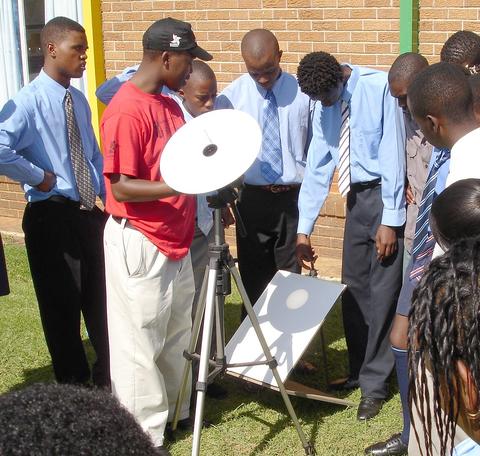
On Monday two busloads of learners arrived at HartRAO. Here HartRAO educator Mzi Taele uses a spotting scope to show sunspots safely.
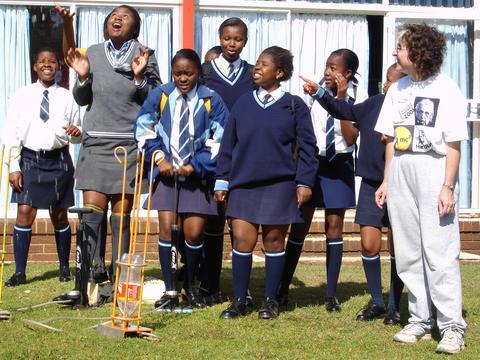
Astronomer Marion West keeps a close eye as a water rocket zooms skywards and another is about to go.

A curved mirror from a scrapped gamma-ray telescope finds a new life in the Visitors Centre, courtesy of the Physics Department at the Northwest University Potchefstroom campus.

Spinning wheels behave in strange ways, as a learner from Wednesday's group discovered. Mzi Taele acts as launch control.
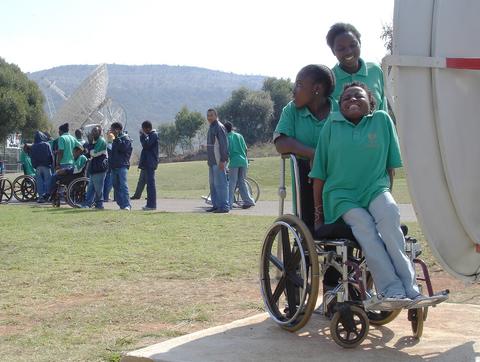
Learners with physical disadvantages were not excluded from the fun.
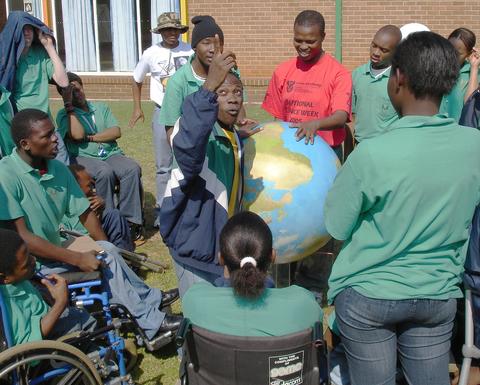
Figuring out where north is got this learner really involved in the action. Mzi Taele in the red shirt keeps a steadying hand on the Earth.
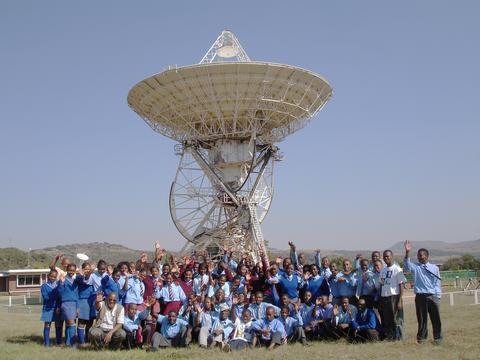
Thursday morning's group of two schools posed in front of the radio telescope. Space Geodesy student Sakia Madiseng, reclining in the centre, has just been telling the learners about what it is like to become a scientist.
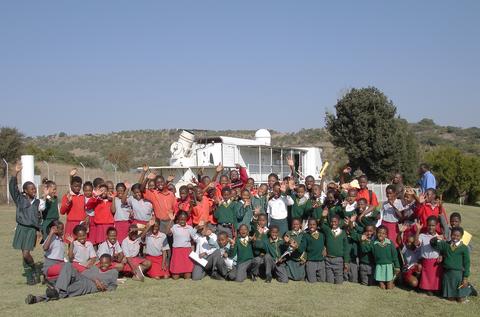
On Thursday afternoon the young learners got a close look at the Satellite Laser Ranger, seen in the background being operated by Abel Chibwe.

On Saturday May 14 the last group of over 100 members of the public arrived at HartRAO for the final event of National Science Week.
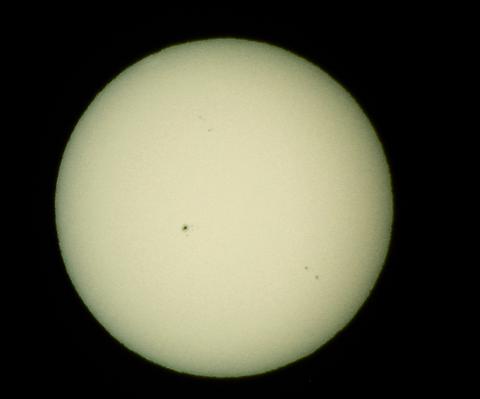
Projecting an image of the Sun using a spotting scope showed three groups of sunspots on its surface. The audience were surprised to find that they could see the biggest sunspot group directly, with the aid of eclipse viewers.
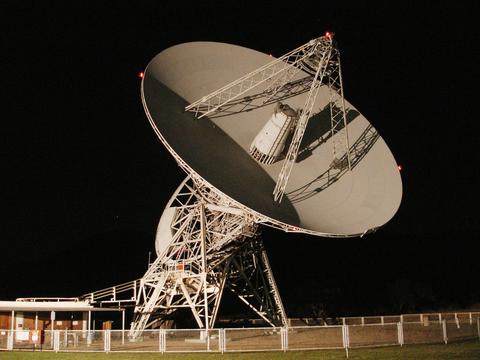
The visitors left in the evening after looking at Jupiter, Saturn and the crescent Moon through telescopes. The last view they had of the radio telescope before departing is shown above, as the telescope began a week long session operating as part of the network of radio telescopes in Australia called the "Australia Telescope Long Baseline Array".